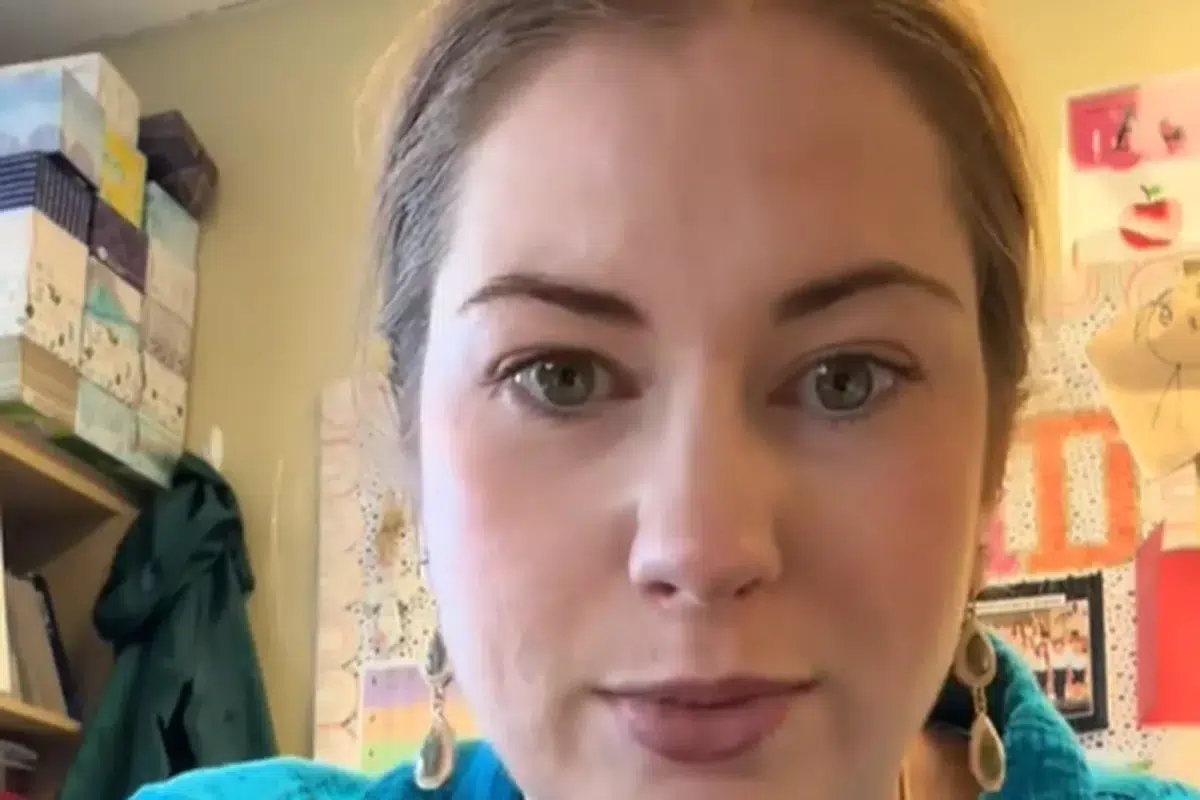Show table of content Hide table of content
In a viral TikTok video that’s resonating with educators across America, 28-year-old kindergarten teacher Emily Perkins has made a passionate plea to parents. Her message cuts through the noise of typical school preparation advice and focuses on one fundamental skill that can transform a child’s educational journey.
The crucial boundary children need before starting school
“As a kindergarten teacher, I’m constantly asked how parents should prepare their children for school,” Perkins explains in her widely shared social media post. While many parents focus on self-care skills like getting dressed independently or personal hygiene, Perkins believes something else takes priority.
Her essential advice? Teach your child to understand and respect the word “no.” This simple boundary-setting might seem basic, but according to Perkins, it’s fundamental to classroom success.
Life This TikToker buys a used van and realizes it has a hidden surveillance device.
“No isn’t a bad word,” Perkins emphasizes. “Children need to learn that when an adult says ‘no,’ it’s not an invitation to negotiate or debate.” This boundary recognition forms the foundation for healthy communication patterns that prevent unnecessary conflicts in the classroom.
The trend toward permissive parenting has created challenges in educational settings. Some parents admit they avoid saying “no” to avoid upsetting their children. This approach, while well-intentioned, can create difficulties when children enter structured learning environments.
Dr. Deborah Gilboa supports Perkins’ position, noting that children who struggle with boundaries often do so because “no has never actually meant ‘no’ to them before—it’s meant ‘ask me again’ or ‘I’ll complain until you give in.'” These patterns make classroom management exceptionally challenging.
Why understanding boundaries transforms classroom experiences
The classroom environment differs significantly from home. With one teacher responsible for multiple children, clear boundaries become essential for both learning and safety. When children understand and respect the word “no,” teachers can focus on education rather than constant behavior management.
Life Say goodbye to flat and deep plates, here’s the new dinnerware trend for 2025.
Perkins offers a compelling example: fire drills. “During emergency procedures, children must respond immediately to instructions. I love explaining ‘why’ when possible, but sometimes immediate compliance is necessary for safety.” Children who understand boundaries can navigate these situations successfully.
Structure and predictability help children thrive in educational settings. Students who recognize limits tend to feel more secure and can focus better on learning objectives. Those who constantly test boundaries often miss valuable learning opportunities while developing problematic relationship patterns with authority figures and peers.
For teachers like Perkins, the issue isn’t about control but creating an environment where all children can learn effectively. “I’m happy to help with practical skills like opening snacks or putting straws in juice boxes,” she clarifies. “Those things don’t prevent me from teaching. But when a child can’t accept ‘no,’ teaching becomes nearly impossible.”
The school environment requires children to follow directions, take turns, and respect others’ space—all skills that build upon understanding boundaries. Students who enter kindergarten already recognizing these concepts demonstrate higher standards of self-regulation and social awareness.
Balancing boundaries with explanation
While Perkins advocates for teaching children to respect “no,” she doesn’t suggest an authoritarian approach. “Explaining the reasoning behind rules helps children develop critical thinking skills,” she notes. “But explanations should supplement boundaries, not replace them.”
This balanced approach creates a framework for children to understand both what the boundaries are and why they exist. Developmental psychologists suggest this combination helps children internalize rules rather than simply following them out of fear.
Parents can practice this at home by setting clear expectations while providing age-appropriate explanations. For example: “No, you can’t run in the house because someone might get hurt.” This approach avoids using vague or inconsistent phrases that confuse children about what’s actually expected of them.
The goal isn’t blind obedience but helping children understand that boundaries exist in all aspects of life. Learning this lesson early prepares them not just for kindergarten but for navigating social structures throughout their lives.
Life Everyone had this toy in the ’90s, and it now sells for over $3,000.
Setting healthy boundaries doesn’t mean abandoning flexibility or compassion. Rather, it provides a framework within which children can safely explore and learn. Parents who establish consistent boundaries while maintaining warm relationships give their children the best foundation for school success.
Preparing children for educational success
Beyond understanding “no,” Perkins encourages parents to help children develop resilience when facing challenges. “School involves many new experiences and occasional disappointments. Children who can handle hearing ‘no’ tend to recover more quickly from setbacks.”
This resilience becomes particularly important during transitions between activities, sharing classroom resources, or waiting for teacher attention. Children who expect immediate gratification often struggle in group learning environments.
Parents can foster this skill by providing opportunities for age-appropriate independence and allowing children to experience minor frustrations. These experiences build confidence and problem-solving abilities that translate directly to classroom success.
Life Generation Z can’t afford to pay rent, but they will soon be the richest generation in history.
Setting realistic expectations is equally important. Parents who demand perfection or instant compliance may inadvertently create anxiety around boundaries. Instead, consistent, calm boundary-setting helps children understand limits without fear.
The partnership between parents and teachers becomes most effective when children arrive at school already understanding basic boundaries. This foundation allows teachers to build upon established patterns rather than starting from zero.
By focusing on this fundamental skill, parents can dramatically improve their child’s school readiness. As Perkins emphasizes, academic preparation matters, but social-emotional preparation may matter even more for initial success.
When children understand and respect boundaries, they’re better positioned to form meaningful connections with teachers and classmates—relationships that will support their educational journey for years to come.


